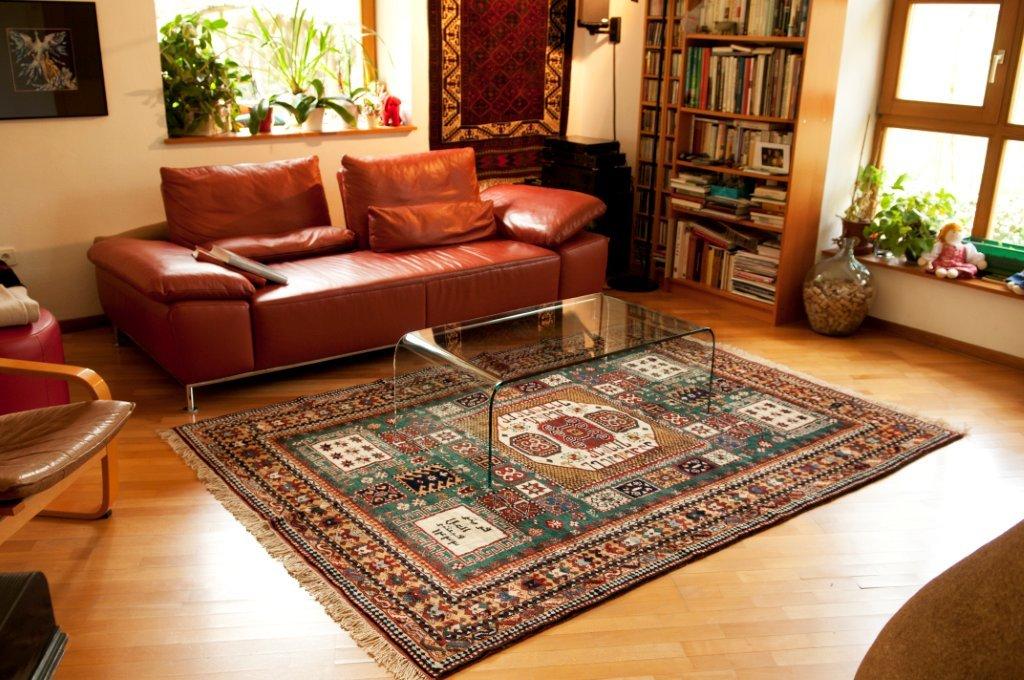Kazak Karachop rug
Code: KZKCH20
Size: 181x220cm
Size (ft): 5'11"x7'3"
Area: 3.98 m2
Density: 105 000 knots per square meter, totally ~420 000 knots
Colors: red, medium blue,
yellow, green, royal blue, maroon, ivory, dark brown.
Dyes:
madder,
weld
(Reseda Luteola),
onion skins, indigo,
pomegranate skins,
walnut husks,
natural dark brown sheep wool, natural ivory sheep wool, natural medium
brown sheep wool.
Materials: Handcarded and handspun wool for pile, ivory wool warps
(natural ivory and brown twist) and
light red wool wefts (two shots, dyed with onion skins). 1cm of flatwoven kilim ends at both sides.
- wool on wool
Knots: Gördes (Turkish, symmetrical)
Pile height: 0.7cm
End finishs: Horizontal band of two-pick oblique
interlacing warps. Braided fringes.
Inscriptions: weaving date, illegible word
Weaver: Sevinj, Khayala
Weaving Period:
Three months
Handwoven in Azerbaijan
Design: The archaic
design in the green field contains a large ivory ground central octagon
which sits within an implied square, formed by triangular corner pieces.
Balancing this central arrangement of motifs are 4 medium sized square
medallions in each corner of the field which add strength to the
composition as a whole by being of the same ground color as the central
large octagon (ivory). These flanking ivory ground squares contain rows of
stars.
A nomadic life scene is depicted inside the central medallion. Two human
being figures holding each other hands stand in front of a tent. There is
a horse with saddle next to the tent. A crescent/moon and a swastika are
depicted above the tent. The swastika represents the sky/universe. There
are stag, goat and dog motifs in the various places of the central
medlallion. The tree represents the nature/forest. The small yellow
squares above and below the central medallion contains 2 circles (above)
and a hooked tribal motif (a decorative tree used in weddings). The minor
ornamentation are various archaic motifs such as rams horns, memling gul,
tree of life, tent (woven upside down) etc.
The design was done by Vugar Dadashov.
The main border depicts hooked motifs which are often interpreted in
literature as symbols of beetles.
Karachop pattern has most probable pre-Islamic totemic sources which it
shares with the Turkoman göl. Over the period from which examples are
available, the design of the Karachop rugs basically remained, stable
geometric designs, possibly because it was ancient adaptation of Central
Asian totemic themes. Many symmetrical design elements to be pointed on
the north/south or vertical axis and blunted on the east/west or
horizontal axis can be found commonly in rugs of Turkic speaking people:
Turkmen, Shahsavan, Azebaijani, Turkish etc. A 'proto-Karachop'
(McMullan, plate 98) from western Turkey shows four pairs of red stylized
animals in the central octagonal medallion, surrounded by four minor
medallions edged with typical Turkoman-style kotshak forms. Most probably
it had a south Caucasian contemporary, but no example is known. The
earliest Karachops, like other early Kazaks, are finely knotted and not
very large. They have either a red or green field, and a dark purple color
is almost always present.
Subsidiary figures which are found at each end, in the 2-1-2 format, can
also let us to trace the lineage of the Karachops back to the Holbein
carpets and Ushaks. Following is an image of a 16th Century Holbein Type
IV rug from the Museum of Islamic and Turkish Arts in Istanbul
illustrating this relationship:
Information about the Karachop village:
Karachöp is the name of a
district with eight villages in Kakheti province, Georgia. The name of
these villages are Yor-Mughanli, Tüller, Lambali, Kesheli, Düzeyremi,
Qarabaghli, Qazylar and Baldo. These villages are inhabited by Karapapakh
Turks. This is the ethnic group who is responsible for the weaving of the
historical Karachop rugs. The names of these villages are taken from the
sub-groups of the Karapapakh tribe.
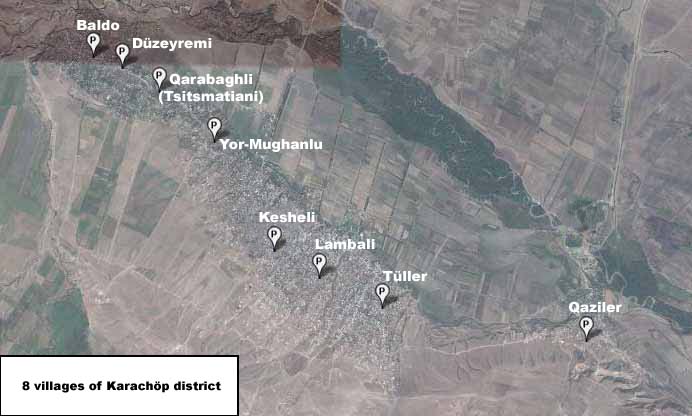
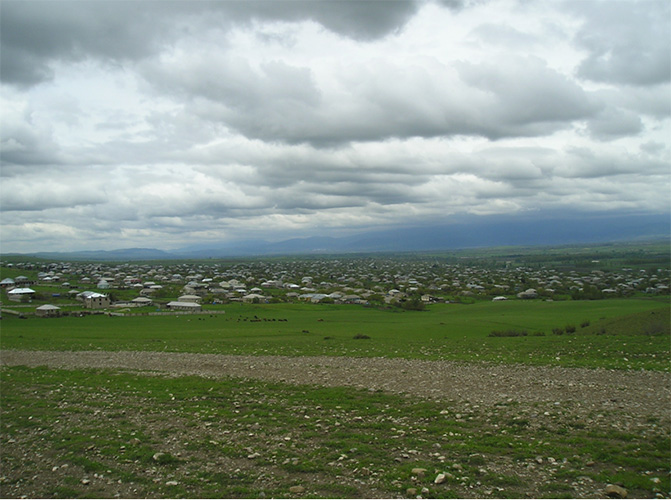
Karachop village |
Note: KARAPAPAKH (Turkish, "black hat"), a Turkic people whose language
belongs to the western Oghuz division. They are of mixed Kypchak and Oghuz
origin.
More
information about Karapapakhs
https://en.wikipedia.org/wiki/Qarapapaqs
|

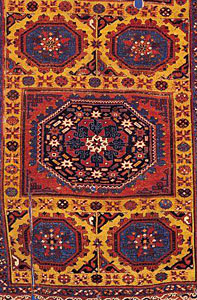


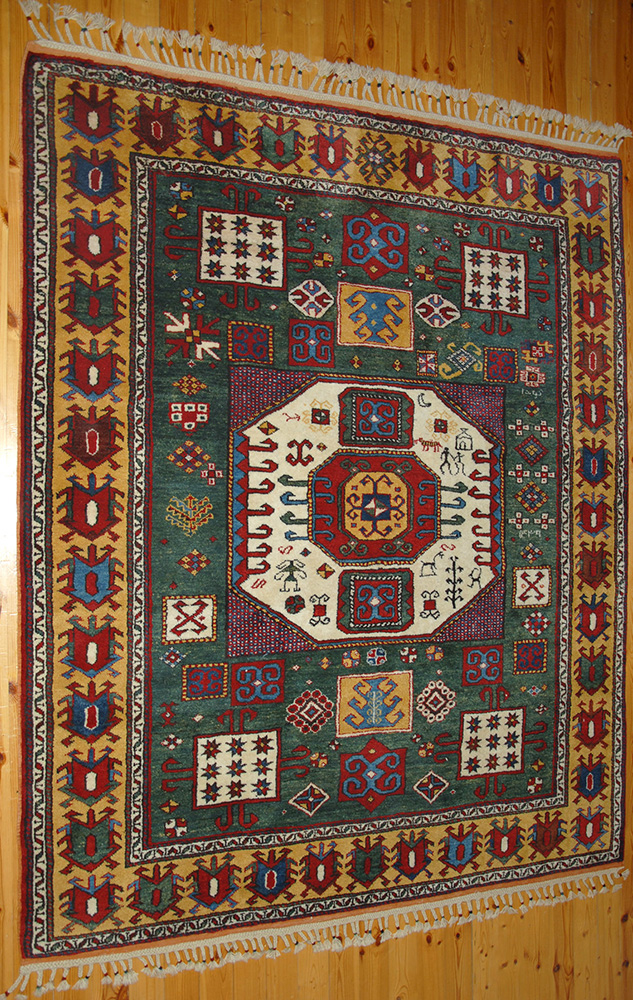
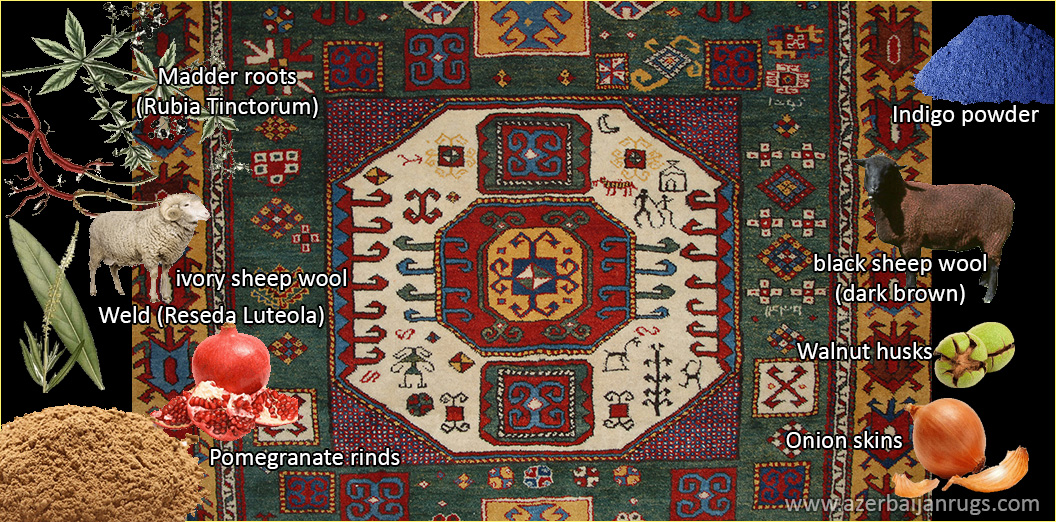
.jpg)
.jpg)
.jpg)
.jpg)
.jpg)
.jpg)
.jpg)
.jpg)
